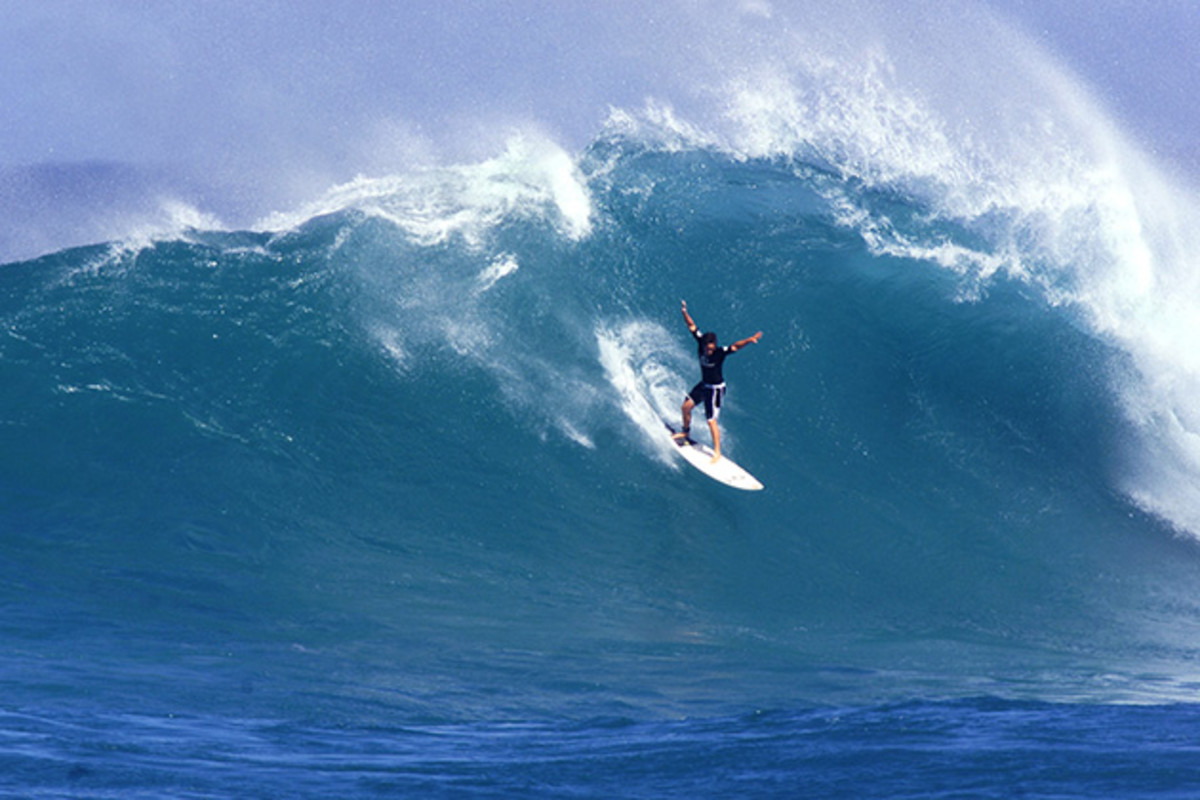On the Road: Big wave surfer Makua Rothman trains with ‘no timeouts’

World No. 1 big wave surfer MakuaRothman may feel that, as he says, his “house is like a suitcase,” but where he lives is on the water and—sometimes—under the water.
“We perform in the ocean,” Makua tells SI.com, “there is no timeout. There is no standing eight count. When underwater you have to relax and have enough time and enough air, conserve as much [as you can] for your next wave.”
So even when living life on the road, Rothman does everything with a focus on life on the water.
Also an accomplished musician with an album, Rothman, 31, tours for two reasons, sometimes not even knowing he is leaving for an event until just days before the plane takes off. To stay ready, Rothman works with a boxing-based nutritionist and strength and conditioning coach.
“I have a full-on training regimen, just like any elite athlete,” Rothman says. “I have been doing a lot of underwater training, a lot of boxing, explosive training, timing, rhythm, speed, balance and performance on unstable surfaces. I try to simulate Mother Nature by performing on something that is moving while working out.”

Rothman uses his workout, which he does with surfing legend Laird Hamilton, when he visits Hamilton at his Malibu home. The two push each other—“Laird is half fish,” Rothman marvels—with a specially designed workout that includes one man on the side of the deck hitting weights and the other man in the water, “back in a hole,” working to stay underwater as long as possible while staying in constant motion.
“It is pretty gnarly training for surf and turf,” Makua says. “You get a certain amount of breath. In Mother Nature, sometimes you don’t get a breath. You get hit.” With water, weights and breathlessness all around the duo, prepping for life underwater makes Rothman comfortable for those times he wipes out in competition.
Barbarian Days: William Finnegan's surfing memoir is a glorious ride
But living on the road is more than working out in a variety of ways. It includes the logistics too. Makua brings up to three boards, between 10 and 11 feet long, per trip, depending on the location. He totes them in a surf bag that exceeds 100 pounds.
Rothman wants to vary his board selection, knowing that the decision he makes at home can greatly affect his performance on the water. “You can use the biggest board ever, but if not in the right spot, you are not going to catch the wave,” he says. “I like to ride a board I can maneuver.” With that, he brings a main board and two smaller ones.
With so many different trips, often for different reasons, he puts as much as he can in a backpack and has different bags for different tours. “It is real monotonous,” he says about packing. He brings boards, T-shirts, long pants, an inflatable vest, wetsuits and his asthma inhaler to fight his chronic asthma, a condition that almost cost him his dream of surfing. With some tours longer—or colder—than others, he often has to add hoodies, booties and gloves.
Once on location, Rothman makes sure he is relaxed for the waves. “My downtime is a lot of resting, stretching and breathing exercises,” he says, “things to make me relaxed for my big day ahead. I focus in on that inner animal status. It is me against everyone else. There are no friends till I get to the beach.”
MORE EDGE: Maddison's Pipe Dream, Conlogue takes No. 1 in WSL ranking
But after a competition, that’s when Rothman looks to explore culture. “I want to taste the culture, I don’t want all that crap I can get anywhere else,” he says. “I try and tap into the culture and the food as much as I can.”
With a life ever shifting—from his schedule to the waves he rides—the youngest surfer ever to catch the biggest wave in the world, a title he held at age 18, knows that at this stage in his career he must prepare for anything, especially those on-the-road moments under water.
Tim Newcomb covers stadiums, design and gear for Sports Illustrated. Follow him on Twitter at @tdnewcomb.
